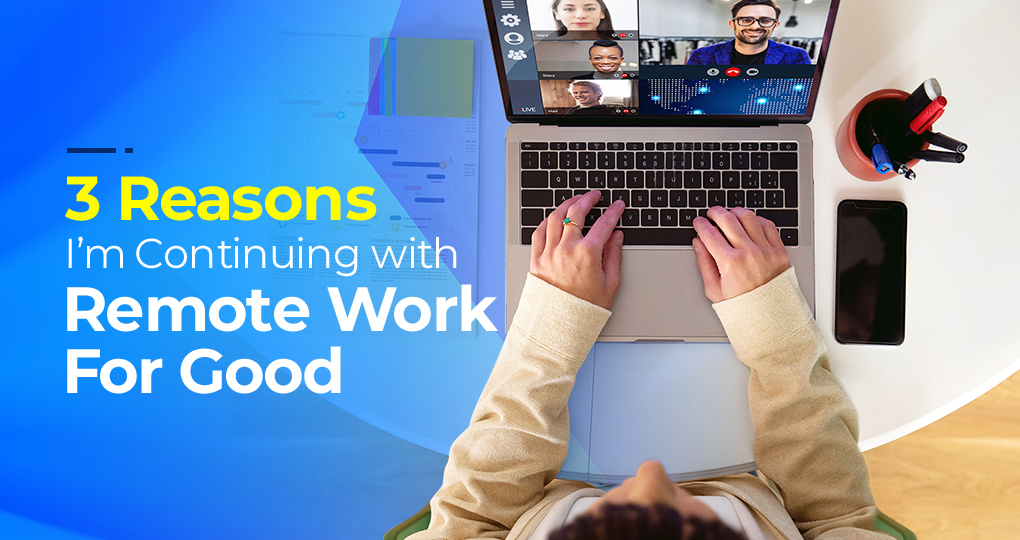Category Archives for Blog

Why You Need Onboarding Software
So you’ve managed to hire an experienced and skilled new staff member. Are you sure you can keep them around? It all starts with your onboarding…
Employee Retention Stars On Day #1
The onboarding process is an integral part of the employee life cycle. It sets the tone for a successful relationship between employer and employee and directly informs the new hire’s comfort on the job.
That’s why successful employee onboarding can improve your employee retention rate by as much as 82%.
Onboarding new employees should be a smooth transition that allows them to quickly adjust to their new work environment and become productive members of the team. Unfortunately, this isn’t always possible, either due to a lack of resources or inadequate preparation—or both.
Key Challenges With Employee Onboarding
To make sure your onboarding process is successful, you need to provide comprehensive training materials that are easily accessible to your new hires.
This includes providing an up-to-date job description, outlining expectations from day one, and ensuring all safety protocols are in place before they start working. Unfortunately, this can be a lot to manage, especially when you consider these common obstacles to the process:
Undefined Roles
Smaller businesses often struggle with key managerial tasks, such as employee onboarding. If the owner is too busy managing the operations of the company and lacks middle managers or an HR department, they may not be able to devote the necessary time to the process.
Out Of Date Materials
Furthermore, with no specific staff member tasked with managing and optimizing this process, it’s more than likely your training materials are out of date. This only further complicates the new staff member’s first days on the job.
Unengaging Training
Lastly, if you lack an actionable strategy for the development and improvement of your training materials, they likely aren’t all that engaging. A boring binder of materials, a stale PowerPoint, an outdated video; none of this will excite your new hire about integrating into your company.
The Secret To Optimizing Your Onboarding
If you’ve been struggling with these challenges, you’re not alone. Business owners across the country know how difficult this can be. After all, 88% of companies do not onboard their new hires effectively.
Don’t worry, there is a solution, and it doesn’t involve hiring an HR team you can’t afford. You can optimize your onboarding process with the right software.
Onboarding Software Will Change The Way You Grow Your Staff
Onboarding software is designed to streamline and improve the onboarding process for both employers and new hires.
It allows an organization to:
- Create personalized onboarding plans and guides
- Automate paperwork processes
- Provide access to important resources like training materials
- Create a system for tracking tasks that need to be completed
- Store all relevant onboarding data in one place.
These tools make it easy to stay organized throughout the entire onboarding process. Organizations can easily create custom onboarding schedules with associated tasks and deadlines, assign mentors or supervisors to follow up on tasks, review progress at any time by accessing real-time reporting features, and use this data over time to refine their future onboarding strategies.
As business owners implement new onboarding software, they often find that it helps reduce stress for new hires by providing all of the necessary onboarding information upfront. This increases employee engagement and job satisfaction while making it easy to answer common questions quickly and accurately.
As a result, companies can create an enjoyable and positive onboarding experience while ensuring their new employees are well-prepared for success in their roles.
3 Must-Have Features For Your Onboarding Software Of Choice
Like any software, onboarding solutions vary in features, capabilities, and price points. Make sure you find one that offers the following…
Integration With Your Systems
Don’t bother purchasing onboarding software without first ensuring it integrates with your systems. After all, this type of software is supposed to make your life easier, not add more work to get it to cooperate with your other applications.
Before you make your choice, make sure it can work seamlessly with:
- HR platforms
- Recruiting solutions
- Payroll & benefits systems
- Reporting solutions
Gamification Options
Engaging your employees during their training can be as simple as adding a few interactive stages. Known as “gamification”, this is the initiative to improve other boring processes by incorporating quizzes, assigning badges, and displaying leaderboards.
Mobile Capability
The more mobile your workforce is, the more beneficial mobile integration is for your onboarding software. It allows new team members to participate in training and for managers to track progress in the manner most convenient to them. This will only serve to boost engagement and effectiveness.
Don’t Let Your Onboarding Process Cost You Skilled Staff Members
In summary, onboarding software is an invaluable tool for companies wanting to streamline the onboarding process, increase efficiency, provide personalized support for new hires, and create a great first impression with potential staff members.
By utilizing these tools correctly, employers can ensure that their organization not only recruits but also retains quality personnel in order to achieve long-term success.
Do you need help selecting, installing, and managing the right onboarding software for your organization? Get in touch with our team today.
Continue reading
Hiring Crisis: 3 Lessons To Learn While Growing Your Staff
Hiring Crisis: 3 Lessons To Learn While Growing Your Staff
Amid a nationwide hiring crisis, it’s never been more difficult to recruit and retain quality team members. Consider the top three lessons we’ve learned over the past three years to better manage the new hires you bring into your company.
How To Find & Hire The Right Staff Members
Are you having trouble hiring right now? You’re not alone.
Month after month, new reports hit the headlines showing that companies across the nation are struggling to fill their open positions, keep people on staff, and manage their workload. The past few years have hit the working world hard in many ways, and one of the emergent and long-lasting effects is the ongoing labor shortage.
3 Lessons You Need To Learn About Hiring New Staff Members
Priorities Have Changed
Far and away, this was the hardest lesson we had to learn while trying to hire new staff members of late. The simple fact is that so many of the people you’ll want to hire may not have the same work/life priorities that they had two or three years ago.
The mass pivot to remote work demonstrated the possibility of a different work/life balance for millions of people around the world. These people had become accustomed to living a life that often prioritized work over the time they spent with friends and family or in recreation.
When they switched to remote work, most of them discovered they were able to accomplish the same work without having to commute, pack a lunch, or deal with the other trappings of conventional work.
The issue is that, while you’d like everything to go back to the way it used to, it’s risky to mandate in-office work. It could lead to a toxic work culture, or a workplace with a high rate of turnover—or, more likely, both.
To be clear, this doesn’t mean to have to stick with a total remote work model. You can compromise with a hybrid arrangement instead. A hybrid work model is a great way to increase workplace productivity, flexibility, and agility.
It allows employees to utilize both in-office and remote working environments, which helps them become more productive and engaged with their work. In addition, hybrid remote work helps employers like us better manage costs as it reduces the need for office space.
Furthermore, it increases employee morale and retention, as employees have more flexibility and control over their work hours. It helps to promote a healthy work-life balance for employees, which can lead to greater job satisfaction.
Overall, hybrid remote work is an excellent way to increase workplace productivity and employee morale while reducing costs.
Don’t Rely On Employment Apps
On the more direct and practical side of our advice, we want to ensure you don’t make the same mistake we did by relying on employment apps. You know the ones we’re talking about: Indeed, ZipRecruiter, etc.
At first, these seem like wonderful tools for a manager trying to hire new staff members. You simply post a job description, and applications start flooding your inbox. However, as soon as your start reviewing the applications and reaching out to applicants, you’ll start noticing the issues:
Application Volume
Getting hundreds of applications for your job really isn’t a good thing. First of all, it’s a lot of work for you and your team to review these applications. The small portion of strong applicants will be hidden in a mountain of bad ones.
The core issue is that these apps allow applicants to automate the process of applying to a job posting. They can upload their resume, and tell the app to send it to any open jobs that meet specific criteria. They never even need to review the job they’re applying for; the first they may hear about it is when you offer them an interview slot. While this automation may be convenient for the applicant, it makes your job that much more difficult.
Applicant Interest & Investment
The other downside to the automated nature of these apps is that they do not engender any personal investment from the applicant. Instead of scouring job postings boards and seeking potential employment about which they can be passionate and excited, applicants are completely removed from the process.
This results in a total lack of investment from the applicant. In practical terms, this means you won’t necessarily get a response when you reach out to them.
If you do get a response and schedule a time to meet with them for an interview, they may not actually show up. In my experience, more than half of the applicants to which we offered interviews (and who confirmed the appointment), did not show up.
Overall, this resulted in hours and hours of wasted time for the management team. This is why we don’t post jobs on these sites anymore. We post through our social media, we rely on our staff for word of mouth, and we utilize industry-specific job boards.
Be Patient
This may seem obvious, but we think it’s a valuable reminder. If you want to find a talented new team member with the attitude and work ethos that fits your company culture, it’s not going to happen overnight.
It’s important to understand that building an effective team that has real longevity is no small thing. It will take months, if not years. You need to be prepared to sift through the many applications you receive, to interview potential applicants multiple times, and to provide structured training once you’ve made your selection.
Is it a lot of work? Yes, of course—but it is an investment.
Over the course of a year or two of intentional and careful development of your team, you’ll start to see the fruits of your labor. In fact, it will get easier over time, as your currently established team and the culture they embody will actively cultivate itself in new additions to your staff.
Don’t Get Discouraged
To whatever degree you may find these lessons helpful, we know they don’t solve anything for you immediately. There is no magic solution to this problem.
More than anything else, we want to make sure you don’t get discouraged. Don’t just hire anyone because you need a body to fill a position; that’s a band-aid solution, and it won’t last.
Lastly, while we can’t help with the recruitment or training processes, our team can assist with your onboarding process. Setting up new computers, configuring secure accounts and remote access, you name it—we’re here to provide technical expertise if you need it.
Book a meeting with us to get started.

The Top 3 Considerations For Managing Your Remote Employees
Are you considering making remote work a part of your business’ operations long-term? Then make sure you keep these important considerations in mind going forward.
3 Best Practices For Managing Remote Workers
Is remote work a permanent part of your business model?
This approach can take many forms. Maybe your staff follows a hybrid work arrangement, where they’re in the office some days and at home for others. On the other hand, maybe you have staff members that work full-time in the office, and a team of remote workers that operate on the other side of the world.
To whatever degree you manage remote team members, one thing is clear—you have to do so carefully.
The Pitfalls Of Remote Work
Plenty of managers and business owners have made big mistakes with remote workers. The process of giving up in-person managerial control of the workplace can be daunting if you’re used to it being that way.
This often leads to remote team leaders micromanaging their staff members, scheduling too many check-in meetings, and tracking time down to the minute. We’ll make this clear: there’s no faster way to disengage a remote employee than by wasting their time with your managerial insecurities.
However, with the right approach to your management strategy, you can fully activate your staff members while they work remotely…

4 Tips For Managing Remote Workers
Over Support & Under-Manage
The core issue at play with remote workers is obvious: when staff members are not in your office, how can you effectively manage them? The key is to make no assumptions about what they have, and make every assumption about what they will produce (until proven otherwise, of course).
In other words, you should be committed to equipping your remote workers with each and every resource they need to succeed, and then trust them to deliver the services or goods they have agreed to. You should only micromanage the quality of their work experience; not their performance on the job.
For example, ask about their home “workplace”. The space one works in is an important part of productivity. Make sure your remote worker is in a comfortable, distraction-free space that is as similar as possible to your normal workplace.
This may require investing in an office chair or a second monitor. Not everyone will have the necessary tools at home, and so, it’s recommended that you have a number of remote work bundles ready to go to maintain continuity and security:
- Laptop
- Monitor(s)
- Keyboard and mouse
- Phone system and headset
- Business-class firewall
- AV Software
Promote Balance
Encouraging a balanced workday is important for the productivity and morale of your staff. Make sure that they are taking breaks to stay hydrated, relax, and stretch.
This will help them to be more focused and productive when they are working. Additionally, it is important to set a good example for your staff by maintaining a balanced workday yourself.
Keep in mind that this does not have to be part of a staff-wide social initiative. You do not need to schedule a group “desk yoga” break after lunch every day, as these types of activities will more often than not wear down the goodwill among remote staff.
Instead, make sure you provide space for your remote team members to decompress. This may be a matter of encouraging them to take a walk after lunch or providing an employee-only social Slack channel (no management allowed!)
Make Sure Everyone Knows The Plan
You need to be sure that everyone is on the same page with respect to communication. Some staff members may update you multiple times per day, while others may not communicate at all unless there is an emergency.
Establish a policy for when and how communication should take place, and make sure that everyone follows it. This will help to ensure that everyone is kept up to date with what is happening.
Our advice is to develop a culture of communication that is both ubiquitous and brief. This has the two-pronged benefit of ensuring regular communication is encouraged, without wasting anyone’s time in the process of drafting long emails or sitting through long meetings.
Consider the following benchmarks:
- Direct messages should be as short as possible (one-word responses aren’t rude—they’re efficient).
- Emails should be 2-3 sentences.
- Phone calls should be <5 minutes.
- Meetings should be <30 minutes.
Essentially, whatever you or an employee needs to communicate should fit into this hierarchy. If you can’t address the topic in a DM, then fit it into an email. If it doesn’t fit into an email, then have a quick phone call. All of this should funnel up to your weekly or monthly staff meeting, which is likely the longest staff-wide event on the regular calendar.
Activate Your Team While They Work Remotely
The bottom line is that managing a remote staff is largely a matter of surrendering the control you got used to in the conventional, in-person workplace. You cannot micromanage your remote staff, and so, it’s up to you to build an environment of trust, support, and productivity.
We know that one big challenge for business owners when it comes to remote work environments is technology. What tech does your remote staff member need? How do you ensure they have secure access to company files? Is their home network secure enough to trust?
If you need expert assistance, allow us to help. Book a meeting with us to talk further.
Continue reading
Remote, On-Site, Or Hybrid—Which Work Model Is Right For You?
Are you looking into establishing a new work model for your business? Executed correctly, the right work model can come with a lot of advantages.
What’s your business’ current work model?
Over the past two years, you’ve likely engaged in some degree of remote work for your staff. Going forward, however, you may assume you’re stuck with one of two potential scenarios:
- Your entire staff returns to work in the office
- All of your staff continue to work remotely
We want you to know there’s a compromise between the two: hybrid work. It’s a middle ground between the two options and offers you the best of both worlds.
Striking A Balance Between Remote Work & The Office
The core aspect of the hybrid work model is that it lets you enjoy the benefits offered by remote work without sacrificing your in-office community.
Employee by employee, one person may prefer remote work, and the other may instead prefer to work in the office. Instead of having everyone fit into one model, you can cater to both sides.
After all, these two opposing models offer competing advantages. Remote workers have seen a number of key benefits:
- 77% of remote employees say they’re more productive when working from home
- 76% of employees prefer to avoid their office completely when they need to concentrate on a project
- 98% of remote workers want to continue to work remotely (at least some of the time) for the rest of their careers
However, for all the ways remote work is beneficial to both the organization and end-users, it’s not without its challenges. A study found that remote workers across the country encountered a series of challenges in their daily work life:
- 19% experience loneliness
- 17% have difficulty communicating and collaborating
- 8% have trouble staying motivated
So how do you reconcile these many pros and cons that come with either option? Compromise with a hybrid work model. Doing so harnesses all the advantages and none of the disadvantages of both choices:
- Employees spend a portion of their work time at home, focusing on key tasks and projects
- The remainder of their hours are in the office, where they are available for meetings and can contribute to a social company culture
That said, it’s not as though hybrid work presents absolutely no obstacles to managers and business owners…
Key Challenges Associated With Hybrid Work
The most important consideration is your technology. Security is a complicated undertaking for work models that include remote work. In fact, 36% of organizations have dealt with a security incident due to an unsecured remote worker.
Continuing with a remote work model, whether entirely or in part, will require:
- Enhancing security measures
- Providing the right hardware for users working permanently from home
- Implementing more permanent file-sharing, collaboration, and communication tools
How To Protect Your Hybrid Business
In optimizing your hybrid working model, make sure to consider the following best practices for your cybersecurity:
Identify Risks
In order to confirm your security capabilities, you need to conduct a cyber risk assessment along with a vulnerability scan of your systems. This will help you identify potential vulnerabilities, and develop the starting blocks to a secure long-term hybrid management plan.
Train Your Staff
As some of your staff will be working from home, it’s more important than ever to ensure they receive proper awareness training. Without proper supervision, they are at greater risk of compromising the security of your business data or falling for phishing scams. Make sure they understand how to maintain business cybersecurity from their home office.
Deploy Security Measures
Your hybrid environment will require a combination of threat monitoring, firewalls, and antivirus solutions. These defenses will form a comprehensive cybersecurity posture to protect your office network as well as your employees while they work remotely.
Need Expert Assistance Managing Your Hybrid IT Environment?
If you plan to continue with remote work in one way or another, you may need to change your model of IT support. As you and the other C-level executives at your business have likely discovered since the start of the pandemic, your ability to work remotely depends directly on your IT support.
We can help—we’ve developed extensive experience in helping our partners to launch, optimize and secure remote work capabilities. Now that the mad rush to go remote is over, it’s time to perfect your processes, and you don’t have to do so alone.
Get in touch with our team today to get started.
Continue reading
3 Reasons I’m Continuing With Remote Work—For Good
While it may be relatively safe enough to bring my entire staff back into the office for full-time work, I don’t plan on doing so. Offering remote positions has lowered my expenses and improved my company culture—find out how below.
Discovering The Power Of Remote Work
Regardless of whether or not COVID-19 is over for good, you need to come up with a plan for how your business will operate moving forward.
Will your entire staff be back at work in the office? Will you maintain your current arrangement of remote jobs? Or could you strike a hybrid arrangement?
There are pros and cons when it comes down to deciding what kind of workforce arrangement might ultimately offer the most benefits versus drawbacks during times like these. However, don’t forget that keeping employees happy helps everyone involved.
Consider the following:
- 77% of remote workers report being more productive
- 76% of remote workers would rather avoid the office completely in order to concentrate on their work
- 98% of remote workers want to work remotely long-term for the remainder of their careers
Keep in mind, these aren’t faceless stats either. My staff feels the same way, which begs the question—why not continue with remote work long-term? I know I will.
Businesses are increasingly hiring remote workers, with half of the country working from home even before the pandemic. This means many staff members are working outside of the business’ city of operation and even further away.
The Benefits Of Remote Work
Over the course of the pandemic, I’ve learned three key lessons about how offering remote work can improve a business:
Grow Your Hiring Pool
Expanding your reach through remote work is not only feasible but also easier said than done.
The cost of living has steadily risen over the past few years and even more so during pandemic times; that makes hiring (and keeping) talent difficult no matter where you live today.
What’s worse is that even if there happen to be qualified professionals living nearby, they’ll likely move on within just a few short months when faced with higher costs again. This leaves businesses like yours stuck in a cycle of hiring and recruitment.
By expanding your hiring pool to remote markets, you can hire staff members that won’t have to resign based on changes to your local community’s cost of living.
Eliminate Office Expenses
The fewer staff members you have in the office, the fewer in-office assets and rental space you’ll require. Over the past few years, my budget for office furniture, miscellaneous equipment, and other in-person amenities has shrunk to nearly zero.
Now, while some of these finances have been redirected into investing in my remote workers’ home offices, a lot of that cash has been freed up for other purposes altogether. By reducing these unnecessary expenses, I’ve made my budgeting process that much more forgiving.
Boost Employee Satisfaction
Almost everyone that works for me has reported a general boost in satisfaction since switching to remote work. They don’t have to commute, they don’t have to pack a lunch, and they don’t have to spend nearly as much on gas.
That said, it’s important to recognize that some staff members preferred the in-office environment. That’s why, on a case-by-case basis, we’ve arranged for hybrid working arrangements for those that prefer them. Furthermore, I’ve had to be intentional in planning in-person social events and other activities to keep the social side of our company culture engaged.
Don’t Throw Away Your Investment In Remote Work
You’ve spent the last two or three years learning how to run a company remotely—why let that experience go to waste just to bring your staff back into the office?
With the right strategy, remote work can be an important part of your organization’s long-term success. However, it needs to be done correctly from the start with a plan that includes how employees will interact and collaborate remotely, in both a secure and productive manner.
My team and I can help—over the course of the pandemic, we developed direct experience in helping our partners to launch, optimize and secure remote work capabilities.
Continue reading
Remote, On-Site, Or Hybrid—Which Work Model Is Right For You?
Are you looking into establishing a new work model for your business? Executed correctly, the right work model can come with a lot of advantages.
What’s your business’ current work model?
Over the past two years, you’ve likely engaged in some degree of remote work for your staff. Going forward, however, you may assume you’re stuck with one of two potential scenarios:
- Your entire staff returns to work in the office
- All of your staff continue to work remotely
We want you to know there’s a compromise between the two: hybrid work. It’s a middle ground between the two options and offers you the best of both worlds.

Striking A Balance Between Remote Work & The Office
The core aspect of the hybrid work model is that it lets you enjoy the benefits offered by remote work without sacrificing your in-office community.
Employee by employee, one person may prefer remote work, and the other may instead prefer to work in the office. Instead of having everyone fit into one model, you can cater to both sides.
After all, these two opposing models offer competing advantages. Remote workers have seen a number of key benefits:
- 77% of remote employees say they’re more productive when working from home
- 76% of employees prefer to avoid their office completely when they need to concentrate on a project
- 98% of remote workers want to continue to work remotely (at least some of the time) for the rest of their careers
However, for all the ways remote work is beneficial to both the organization and end-users, it’s not without its challenges. A study found that remote workers across the country encountered a series of challenges in their daily work life:
- 19% experience loneliness
- 17% have difficulty communicating and collaborating
- 8% have trouble staying motivated
So how do you reconcile these many pros and cons that come with either option? Compromise with a hybrid work model. Doing so harnesses all the advantages and none of the disadvantages of both choices:
- Employees spend a portion of their work time at home, focusing on key tasks and projects
- The remainder of their hours are in the office, where they are available for meetings and can contribute to a social company culture
That said, it’s not as though hybrid work presents absolutely no obstacles to managers and business owners…
Key Challenges Associated With Hybrid Work
The most important consideration is your technology. Security is a complicated undertaking for work models that include remote work. In fact, 36% of organizations have dealt with a security incident due to an unsecured remote worker.
Continuing with a remote work model, whether entirely or in part, will require:
- Enhancing security measures
- Providing the right hardware for users working permanently from home
- Implementing more permanent file-sharing, collaboration, and communication tools
How To Protect Your Hybrid Business
In optimizing your hybrid working model, make sure to consider the following best practices for your cybersecurity:
Identify Risks
In order to confirm your security capabilities, you need to conduct a cyber risk assessment along with a vulnerability scan of your systems. This will help you identify potential vulnerabilities, and develop the starting blocks to a secure long-term hybrid management plan.
Train Your Staff
As some of your staff will be working from home, it’s more important than ever to ensure they receive proper awareness training. Without proper supervision, they are at greater risk of compromising the security of your business data or falling for phishing scams. Make sure they understand how to maintain business cybersecurity from their home office.
Deploy Security Measures
Your hybrid environment will require a combination of threat monitoring, firewalls, and antivirus solutions. These defenses will form a comprehensive cybersecurity posture to protect your office network as well as your employees while they work remotely.
Need Expert Assistance Managing Your Hybrid IT Environment?
If you plan to continue with remote work in one way or another, you may need to change your model of IT support. As you and the other C-level executives at your business have likely discovered since the start of the pandemic, your ability to work remotely depends directly on your IT support.
We can help—we’ve developed extensive experience in helping our partners to launch, optimize and secure remote work capabilities. Now that the mad rush to go remote is over, it’s time to perfect your processes, and you don’t have to do so alone.
Get in touch with our team today to get started.
Continue reading
Protect Your Employees and Your Business Against Vishing
Protect Your Employees and Your Business Against Vishing
Key Points
- The increase in remote and hybrid workforces has created new opportunities for bad actors.
- Vishing is a type of fraud where criminals attempt to obtain sensitive information such as usernames, passwords, and credit card details by masquerading as a reputable entity.
- Bad actors typically do this by making voice calls or leaving voicemails that appear to be from a legitimate organization.
- Vishing can have serious consequences for businesses, including compromised company data, financial losses, ransomware infections, and reputational damage.
Cybercriminals are always searching for new ways to prey on businesses and their employees, and the increase in remote and hybrid workforces has created new opportunities for bad actors to exploit. Businesses of all sizes are at risk, and employees are often the weak link in the security chain. One type of attack that is becoming more common is “vishing,” where attackers use social engineering techniques to trick victims into revealing sensitive information. As a business leader, it’s essential to be aware of this threat and take steps to protect your employees.

What Is Vishing and How Does It Work?
Vishing is a type of fraud where criminals attempt to obtain sensitive information such as usernames, passwords, and credit card details by masquerading as a reputable entity. They typically do this by making voice calls or leaving voicemails that appear to be from a legitimate organization, such as a bank or government agency.
Vishing can be very difficult to detect, as the caller may have spoofed their caller ID to make it appear as if they are calling from a legitimate number. This can fool even the most tech-savvy employees.
Once the bad actor has made contact, they will try to obtain personal information from the victim by using high-pressure tactics or threats. For example, they may claim that the victim’s bank account has been compromised and demand that they provide their login credentials to “verify” their identity. Or, they may pose as a government official, say that the victim’s taxes are overdue, and threaten legal action if they do not provide their Social Security number.
In some cases, vishing attacks can be very sophisticated. Criminals may do their research in advance and have detailed information about their targets, such as their name, job title, and company. This can make the victim feel like they are speaking to a legitimate person, and more likely to comply with their demands.
Is Vishing the Same as Phishing?
Vishing is similar to phishing, but there are some key differences. Both vishing and phishing are attempts to gain information by tricking the victim. However, with vishing, the attacker will use the phone instead of email to try to gain access to information.
Vishing can be harder to detect than phishing because the attacker is using a method that feels more personal. They may spoof the caller ID to make it look like they are calling from a legitimate company, or they may use social engineering techniques to try to get the victim to give them the information they want.
The Dangers of Vishing for Businesses
Vishing attacks can have serious consequences for businesses. If an employee falls for a vishing scam, the attacker may gain access to the company’s network and sensitive data. They may also use the employee’s credentials to commit fraud or steal money from the company. In some cases, vishing attacks can lead to ransomware infections, where the attacker encrypts the company’s data and demands a ransom to decrypt it.
Here are some of the most common dangers of vishing attacks:
- Compromised company data: If an employee’s credentials are compromised in a vishing attack, the attacker may gain access to the company’s network and sensitive data. This can include customer information, financial data, and trade secrets.
- Financial losses: Vishing attacks can lead to financial losses for businesses. For example, if an attacker obtains an employee’s login credentials, they may be able to transfer money out of the company’s bank account.
- Ransomware infections: In some cases, vishing attacks can lead to ransomware infections, where the attacker encrypts the company’s data and demands a ransom to decrypt it. This can cause significant disruption to the business and may result in the loss of important data.
- Reputational damage: Vishing attacks can also damage a company’s reputation. For example, if an attacker obtains customer data, the company may be required to disclose the breach to the affected individuals. This can damage the company’s reputation and result in financial losses.
How to Protect Your Business From Vishing Attacks
Vishing can be difficult to defend against, as attackers are constantly finding new ways to exploit employees. There are several steps that businesses can take to protect themselves from vishing attacks, including:
- Educating employees about the risks of vishing and reminding them never to give out sensitive information over the phone unless they are sure they know who they are talking to.
- Implementing a call verification system for high-risk calls, such as those from banks or other financial institutions.
- Making sure all employees know how to report suspicious calls or voicemails.
- Keeping anti-virus software up to date and ensuring all employees have access to it.
Tips for Detecting a Vishing Attack
Vishing attacks can devastate businesses of all sizes – but by being aware of the methods scammers use, you can help protect your employees (and your business) from becoming victims.
Some tips for detecting a vishing attack include:
- Being wary of unsolicited calls from unknown individuals
- Refusing to give out personal or financial information over the phone
- Being suspicious of requests for money or gift cards
- Refusing to click on links or open attachments from unknown senders.
As with any type of cyberattack, the best defense against vishing is awareness and education. By teaching your employees how to spot a vishing attempt, you can help protect your business from this devastating type of attack.
Responding to a Vishing Attack
The way you respond to any attack can mean the difference between a minor setback and a major disaster. If you believe your business has been the victim of a vishing attack, it’s important to take action immediately. Some steps you can take to respond to a vishing attack include:
- Notifying your employees: If you suspect that your employees have been targeted by a vishing attack, it’s important to let them know as soon as possible. This will help them be on the lookout for suspicious calls and take steps to protect their information.
- Contacting your bank or financial institution: If you suspect that your login credentials have been compromised, it’s important to contact your bank or financial institution immediately. They may be able to take steps to protect your account and prevent any unauthorized transactions from taking place.
- Monitoring your accounts: It’s also a good idea to monitor your company’s bank accounts and credit card statements for any suspicious activity. If you see any unusual charges, it’s important to report them to your bank or credit card company immediately.
- Reporting the incident: If you believe you’ve been the victim of a vishing attack, it’s important to report the incident to the appropriate authorities.
Wrap Up
Vishing is a serious threat to businesses of all sizes – but by taking steps to educate your employees and protect your business, you can help reduce the risk of becoming a victim. If you believe your business has been the target of a vishing attack, it’s important to take action immediately to minimize the damage. Be sure to implement strict security measures to protect your business from future attacks.
Continue reading
How Microsoft Azure Virtual Desktops Help Law Firms With Remote Staff
Azure Virtual Desktop can help maximize the efficiency of your workforce, add layers of security, and save your organization money.
Continue reading
25 Questions To Ask Before You Sign Up With A Legal Cloud Provider
Moving to the cloud can have tremendous benefits—but it’s not without its risks, especially if you don’t ask the right questions.
Continue reading
Four Steps You Must Take Today to Safeguard Your Business Against Phishing Attacks
Four Steps You Must Take Today to Safeguard Your Business Against Phishing Attacks
Key Points in This Article:
- Businesses of sizes and industries must contend with phishing attacks which, if successful, can be devastating.
- Having a plan in place is crucial to mitigate the risk of phishing.
- Training employees, managing passwords, updating software, and securing mobile devices are steps you must take to safeguard your business.
No matter the size or industry, businesses face phishing attacks that have escalated in scope and sophistication. Successful phishing attacks can open a backdoor to a business’ corporate network, exposing proprietary, employee, and client information to cybercriminals. Moreover, phishing can give cybercriminals the access needed to deploy ransomware on a network.
Once in place, the software can encrypt files, allowing the cybercriminal to extort a ransom in exchange for restored access. Such ransomware attacks have cost companies anywhere from hundreds of thousands to millions in ransoms, repairs, and reputational damage. And depending on the circumstances, businesses have also faced regulatory action for negligence when breaches have occurred.
Suppose you’re a business owner or executive who’s become increasingly aware of and concerned about the threat of phishing attacks (and cybersecurity in general). In that case, you can take some simple steps to mitigate your risk. While you will undoubtedly be targeted in this day and age, here’s what you need to do to safeguard your business.

Train Employees About Cybersecurity Continuously
Phishing is an attempt to manipulate individuals into revealing confidential or sensitive information. Within a business setting, cybercriminals send employees official-looking emails and texts designed to appear as if they’ve come from the business or one of its leaders. These messages will ask employees to reply with access credentials and, in some cases, their personal financial information.
If you look closely, there are often telltale signs that these messages are fraudulent, and many employees who recognize them will quickly report them to your IT department. But many employees remain unaware of the threat’s magnitude and how to detect phishing messages. When you train your employees to recognize suspicious emails (and other cybersecurity threats), you’ll substantially reduce the risk that one of your employees unintentionally provides cybercriminals access to your network.
However, cybercriminals remain hard at work devising new methods to attack businesses for illicit gain. You must schedule cybersecurity awareness training regularly to keep your employees up-to-date about new threats, reinforce the need for employee vigilance, and ensure new employees are up to speed.
Employ a Robust Password Policy
Sometimes, cybercriminals can compromise a network by guessing a password. Now, they don’t sit down, try to figure out probable passwords, and try them individually. They typically perform what’s known as a brute force attack, using sophisticated applications that automatically try multiple probable passwords. These applications often start with either commonly used credentials or credentials that are in use that a cybercriminal has obtained from a phishing attempt or prior breach.
You can minimize the likelihood of a brute force attack succeeding by requiring employees to create and use unique and complex passwords. Ideally, your password should not be one that can be easily guessed and should contain a list of numbers as well as uppercase, lowercase, and special characters. Passwords containing names, birthdays, and other information that can be guessed or publicly available present a security risk.
Further, you should require that employees change their passwords frequently. Indeed, all employees should be required to change their passwords in a breach. But when you require all passwords to be changed at periodic intervals, you’ll make it harder for cybercriminals to gain access.
Keep Software Up-to-Date
By keeping your security software applications up-to-date, you can be assured you have the latest cybersecurity protections in place. Of course, it’s also essential to ensure you have the right cybersecurity applications in place. You’ll need your IT staff to help you identify the right software applications to keep your network safe. But depending on their cybersecurity experience, you may need to retain the services of a Managed Security Service Provider (MSSP). Because they work in the field 24/7, MSSPs have a breadth of experience and access to security planning and assessment tools that most in-house IT departments don’t. And because they work with businesses in your industry and region, they have practical insights into the threats your business may face.
Your security applications are not all you need to keep current. You also must keep your enterprise software current as well. When software companies retire specific applications, they no longer provide security updates. Cybercriminals may be able to exploit vulnerabilities in these programs to compromise your network. So you must upgrade or replace each software application on your network when the developer retires it.
Implement Strong Safeguards on Mobile Devices
With more companies operating in a remote-only or hybrid fashion, businesses have more devices accessing their network than ever. When the pandemic began, many businesses, in their haste to rapidly go remote, allowed employees to use their own devices and were somewhat laissez-faire in their approach to network security. And with new security vulnerabilities proliferating, many businesses paid a heavy price as their networks were breached.
Some businesses have yet to learn the lessons of those early pandemic days. It’s more critical than ever to ensure that offsite employees are accessing your network safely and securely and that when they do, they are doing so with devices with robust security measures. Moreover, your IT personnel must have the training, resources, and directive to monitor activity that may indicate cybercriminals are attempting to penetrate your network.
Employees often relax their guard when working from home or offsite and may inadvertently expose your network to threats if they access it using a personal device. If you employ a bring-your-own-device (BYOD) policy, make sure you’ve got a clear and comprehensive BYOD security policy in place that should cover how employees connect to your network, security measures to be placed on their devices, what device data will be monitored, and how that information will be used. A phishing attack aimed at obtaining an employee’s personal financial information could also net a cybercriminal access credentials to your network, so pairing your BYOD policy with regular training is crucial.
Even if you provide devices for employees to work remotely or have everyone working onsite, you still need a clear cybersecurity policy (including password protocols) outlining how employees use your devices. You must also provide regular training on the cybersecurity threats they may face. And you need up-to-date security and other software applications on those devices. By taking these steps, you can minimize the risk your business falls victim to a phishing attack. And if you do, these steps will also help mitigate the damage such an attack could cause.
Continue reading


